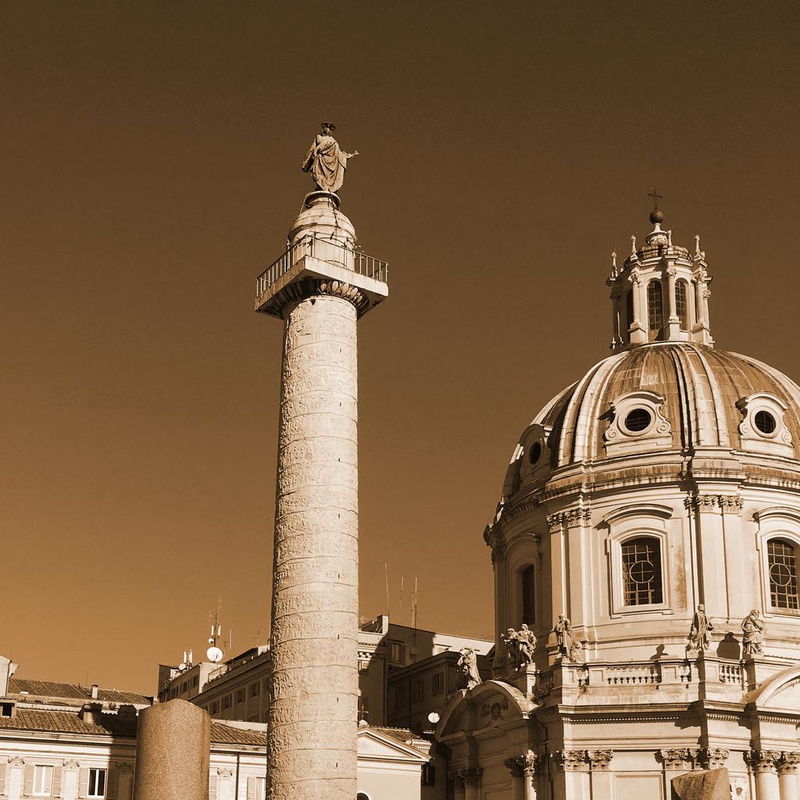Posted by Shazarch on 18 Mar 2021
Trajan's Column
AD 113, Rome
Cultural site
Trajan's Column (Italian: Colonna Traiana, Latin: Columna Traiani) is a Roman triumphal column in Rome, Italy, that commemorates Roman emperor Trajan's victory in the Dacian Wars. It was probably constructed under the supervision of the architect Apollodorus of Damascus at the order of the Roman Senate. It is located in Trajan's Forum, north of the Roman Forum. Completed in AD 113, the freestanding column is most famous for its spiral bas relief, which vividly depicts the wars between the Romans and Dacians (101–102 and 105–106). The column's design has influenced the construction of many other victory columns, both in ancient times and in the modern era. The structure stands approximately 30 metres (98 feet) tall, reaching 35 metres (115 feet) when including its large pedestal. The shaft comprises 20 colossal Carrara marble drums, each with a weight of about 32 tons and a diameter of 3.7 metres (12.1 feet). A 190-metre (620-foot) frieze encircles the shaft 23 times, portraying the conflict's narrative. Within the column, a spiral staircase of 185 steps ascends to a viewing platform. The capital block atop the column weighs 53.3 tons and was raised to a height of about 34 metres (112 feet). Initially, there were plans to crown the column with a statue of a bird, likely an eagle, as suggested by ancient coins. However, after its completion, a statue of Trajan was installed, which has since been lost to history. On December 4, 1587, Pope Sixtus V placed a bronze statue of Saint Peter atop the column, which remains in place today. Trajan's Column was once flanked by the Ulpian Library, consisting of a Greek chamber and a Latin chamber, which housed scrolls in niches and wooden bookcases. It is believed that the Latin chamber stored Trajan's commentaries on the Dacian Wars, known as the Dacica, mirroring the column's sculptural narrative.
